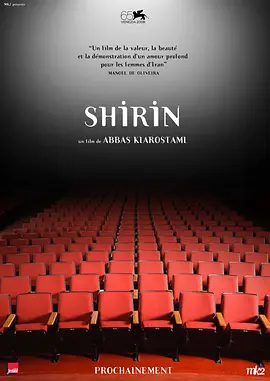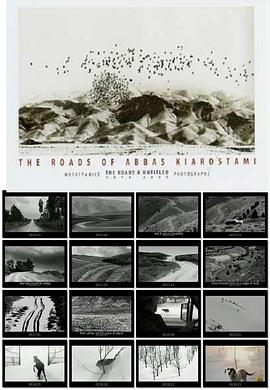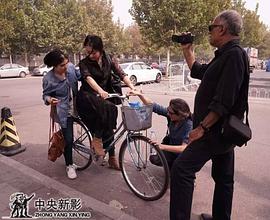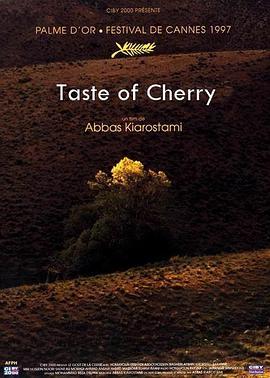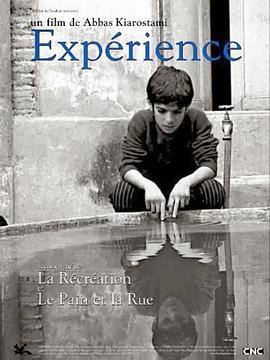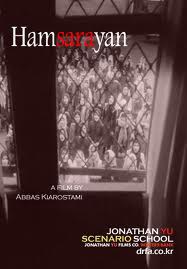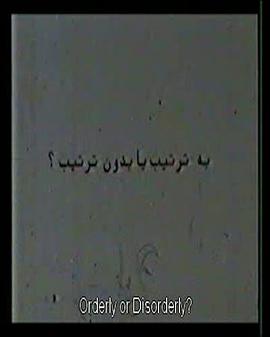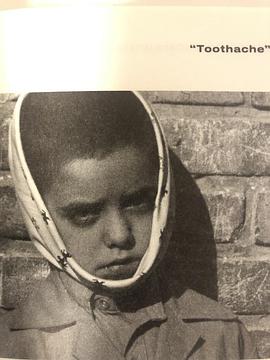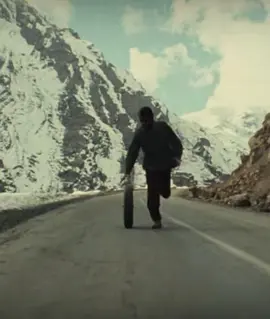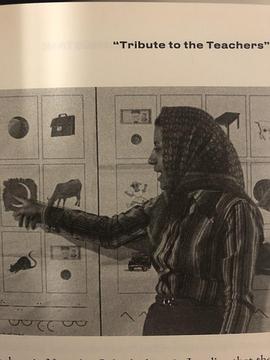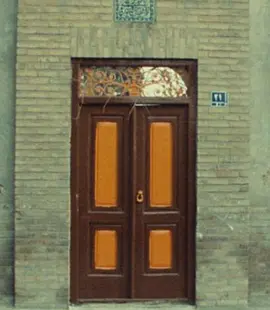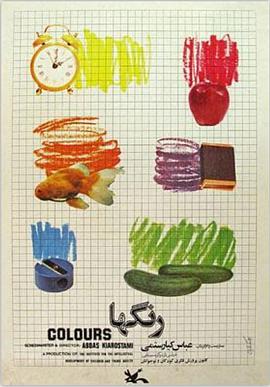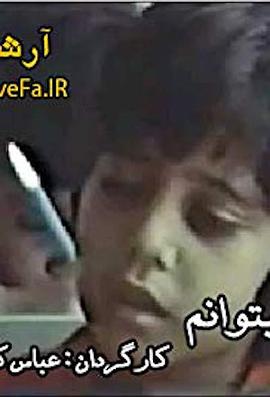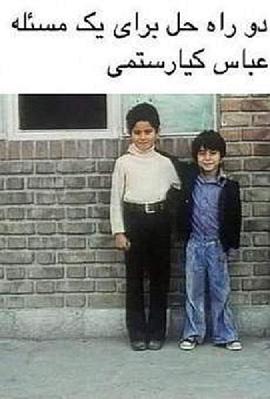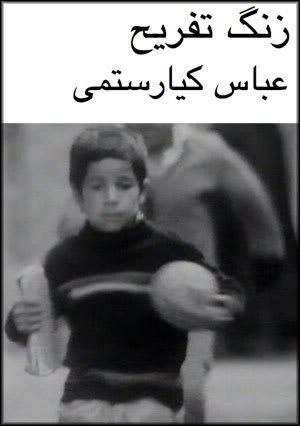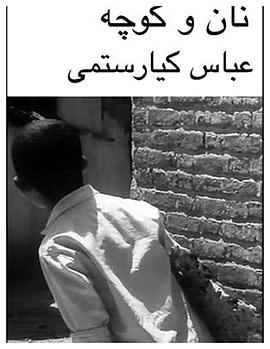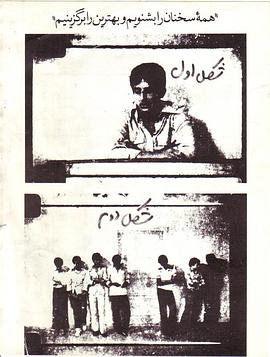阿巴斯·基亚罗斯塔米
樱桃的滋味 (1997) 维基数据 IMDb 豆瓣 TMDB
طعم گیلاس
7.9 (337 个评分)
导演:
阿巴斯·基亚罗斯塔米
演员:
赫玛永·厄沙迪
/
阿卜杜拉曼·巴赫里
…
其它标题:
Taste of Cherry
/
Ta'm e guilass
…
巴迪(Homayoun Ershadi 饰)驾驶着自己的汽车,在遍布工地的郊外漫无目的的行驶,他搭载了一名入伍不久的新兵,和他讲述当年从军的经历,而后提出了自己的要求:出钱要新兵掩埋自己自杀后的尸体,新兵惊慌失措,跑掉了。巴迪继续寻找埋尸人,可工地上的流浪汉、神学院的学生,全部拒绝了他的请求。一位在博物馆工作的老人巴格里(Abdolrahman Bagheri 饰)上了巴迪的车,巴格里曾经自杀,但最终为樱桃的甜美滋味所挽留,巴格里为了治疗儿子的病,应承下了巴迪的请托。巴迪在博物馆外踯躅,心中似乎产生了动摇……
本片获1997年戛纳电影节金棕榈奖,1998年波士顿影评人协会最佳外语片奖。
本片获1997年戛纳电影节金棕榈奖,1998年波士顿影评人协会最佳外语片奖。
结婚礼服 (1976) 豆瓣
Lebasi Baray-e arusi
7.8 (24 个评分)
导演:
阿巴斯·基亚罗斯塔米
演员:
马苏德·森德贝格鲁 Masud Zendbeglu
/
迈赫迪·奈吉伊 Mehdi Nekui
…
其它标题:
Lebasi Baray-e arusi
/
The Wedding Suit
…
A woman orders a suit from a tailor for her young son to wear to her sister's wedding. The tailor's apprentice, together with two other teenage boys who work in the same building, devise a plan to try on the suit at night to see what it feels like. Things get a little complicated but in the morning, at the last possible minute, they manage to return the suit to its proper place.
教师赞歌 (1977) 豆瓣 TMDB
Bozorgdasht-e mo'Allem
5.8 (20 个评分)
导演:
阿巴斯·基亚罗斯塔米
其它标题:
Bozorgdasht-e mo'Allem
/
Tribute to the Teachers
…
1977年,阿巴斯·基亚罗斯塔米受伊朗教育研究所委托,拍摄了这部短片,主题是“教师”。影片时长不到二十分钟,没有情节,结构也极为朴素:一群教师轮番走入画面,对着镜头谈自己如何成为教师、教学中遇到的问题,以及对教育制度的意见。 没有采访者的声音,没有背景音乐。镜头静静拍着他们坐在教室一角说话,偶尔转向黑板、学生和校园。语言平实,表情拘谨,却时常流露出真实情绪。画面中可以看到当时德黑兰街头的轿车、学校里的女教师没有戴头巾,这些细节也成了伊朗伊斯兰革命前社会氛围的意外留影。 虽然是带有宣传性质的“任务片”,但影片几乎没有替官方发声的姿态,反而像一部被托付下来的“听他们说”的作品。这种克制、温和、听人说话的拍法,后来成了基亚罗斯塔米最重要的电影语言之一。
如何利用闲暇时间:给门板刷油漆 (1977) 豆瓣 TMDB
Az Oghat-e Faraghat-e Khod Chegouneh Estefadeh Konim?
7.6 (20 个评分)
导演:
阿巴斯·基亚罗斯塔米
其它标题:
Az Oghat-e Faraghat-e Khod Chegouneh Estefadeh Konim?
/
How to Make Use of Leisure Time: Painting
…
Evidently the first installment in a series that didn’t continue, this instructional film shows idle twelve- and sixteen-year-
old brothers learning how to improve their surroundings by painting an old door. With the narrator giving step-by-step instructions, the boys go through the processes of sanding, applying primer, and mixing different types of paint. Whatever its educational value, the film’s quiet enthusiasm for its subject also reflects Kiarostami’s own interest in woodworking.
一个问题的两种解决方法 (1975) 豆瓣 TMDB
Dow Rahehal Baraye yek Massaleh
6.8 (40 个评分)
导演:
阿巴斯·基亚罗斯塔米
演员:
Sahid Yarrahi Alamdari
/
Hamid Yarrahi Alamdari
其它标题:
Dow Rahehal Baraye yek Massaleh
/
Two Solutions For One Problem
…
小学生纳迪尔不小心撕坏了同学的作业本,就去买了一本新的准备还给他,这位同学面临两种选择:或者拒绝接受新作业本,以报复纳迪尔,结束友谊;或者他们寻求另外一个解决办法(如用胶水粘上),继续成为好朋友。人民可以想象到影片会喜欢哪种办法。
课间休息 (1972) 豆瓣 TMDB
زنگ تفریح
6.6 (39 个评分)
导演:
阿巴斯·基亚罗斯塔米
演员:
Siroos Hassanpoor
其它标题:
زنگ تفریح
/
The Breaktime
…
The second movie of Kiarostami, made in 1972. It calls in my mind some of the very first movies of Brakhage, especially The Way to Shadow Garden. In both cases, a minimalistic gem, nothing explained, a personage without history, without motivation, with the unique role of putting in value a disconcerting universe.
Is it the admirable end of Breaktime a negative stasis (like in the movie of Brakhage)? Well, it is somehow a way to the Gardens of Shadow, too, though I think it is, much more, something else: it is an end refusing to be the end (as the movie actually has no beginning, also). This fourteen minutes movie dares to eliminate the story from its structure! It is a shame that Breaktime passed unobserved, because it was marking a new age in the history of cinema.
Is it the admirable end of Breaktime a negative stasis (like in the movie of Brakhage)? Well, it is somehow a way to the Gardens of Shadow, too, though I think it is, much more, something else: it is an end refusing to be the end (as the movie actually has no beginning, also). This fourteen minutes movie dares to eliminate the story from its structure! It is a shame that Breaktime passed unobserved, because it was marking a new age in the history of cinema.
案例一,案例二 (1979) 豆瓣
Ghazieh-e Shekl-e Aval, Ghazieh-e Shekl-e Dou Wom
8.0 (19 个评分)
导演:
阿巴斯·基亚罗斯塔米
演员:
Ezzatolah Entezami
/
Masoud Kimiai
…
其它标题:
Ghazieh-e Shekl-e Aval, Ghazieh-e Shekl-e Dou Wom
/
First Case, Second Case
…
Kiarostami presents two cases for talking heads to evaluate in terms of morality, rights and responsibilities. Case One: Your son is in class, sitting in the back row. His teacher is writing on the board. A restless student in the back row makes a lot of noise. Not knowing who the culprit is, the teacher makes all the children sitting in the last two rows stay outside of the class until the weekend, unless they tell him who made the noise. After a few days spent outside of the classroom, your son relents and tattles on the boy who made the noise, so he can go back in and continue learning. Was he in the right? Case Two: The other students from the back row wait out the rest of the week outside of the class, before returning. Were they in the right?
